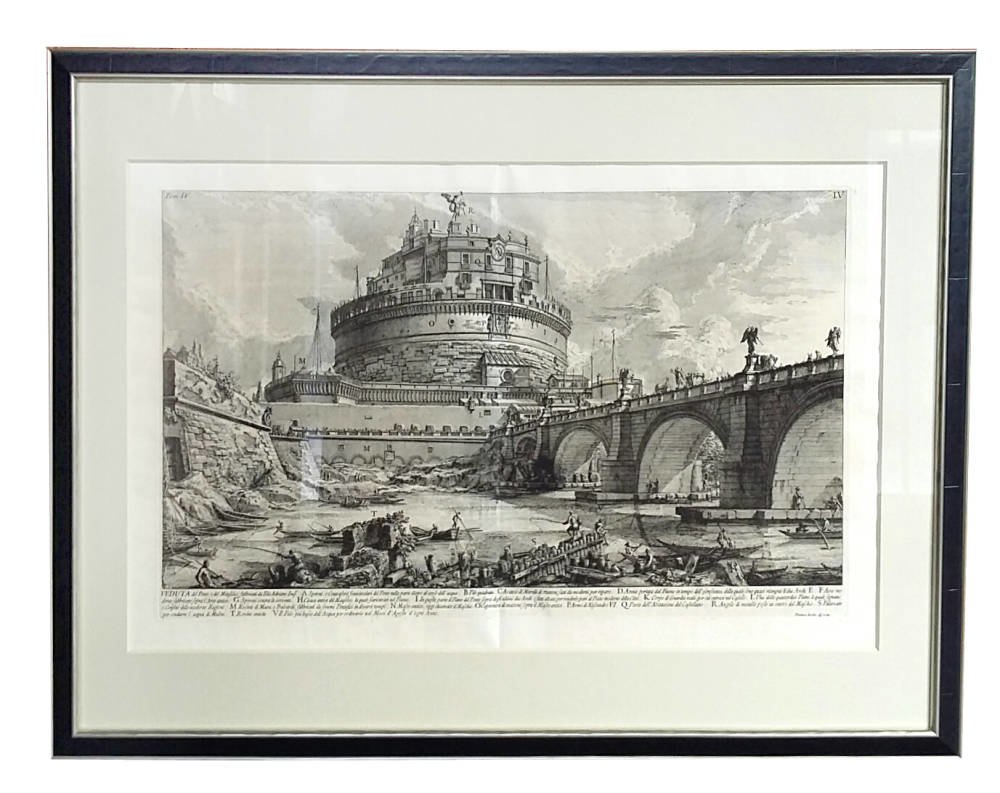



While the Vedutisti (or “view makers”) such as Canaletto and Bellotto, more often reveled in the beauty of the sunlit place, in Piranesi this vision takes on a Kafkaesque, Escher-like distortion, seemingly erecting fantastic labyrinthian structures, epic in volume.
#Piranesi artwork series#
The Prisons (Carceri d’invenzione or ‘Imaginary Prisons’), is a series of 16 prints produced in first and second states that show enormous subterranean vaults with stairs and mighty machines. These in turn influenced Romanticism and Surrealism. Piranesi’s reproductions of real and recreated Roman ruins were a strong influence on Neoclassicism. Twenty-nine folio volumes containing about 2000 prints appeared in Paris (1835–1837). The late Baroque works of Claude Lorrain, Salvatore Rosa, and others had featured romantic and fantastic depictions of ruins in part as a memento mori or as a reminiscence of a golden age of construction. Piranesi’s son and coadjutor, Francesco, collected and preserved his plates, in which the freer lines of the etching-needle largely supplemented the severity of burin work. Some of his later work was completed by his children and several pupils. He was able to faithfully imitate the actual remains of a fabric his invention in catching the design of the original architect provided the missing parts his masterful skill at engraving introduced groups of vases, altars, tombs that were absent in reality and his broad and scientific distribution of light and shade completed the picture, creating a striking effect from the whole view. The remains of Rome kindled Piranesi’s enthusiasm. In 1777–78 Piranesi published Avanzi degli Edifici di Pesto, (Remains of the Edifices of Paestum) a collection of views of Paestum. He died in Rome in 1778 after a long illness and buried in the Church of Santa Maria del Priorato, on the Aventine hill in Rome. In 1776 he created his famous Piranesi Vase, his best known work as a ‘restorer’ of ancient sculpture. In 1769 his publication of a series of ingenious and sometimes bizarre designs for chimneypieces, as well as an original range of furniture pieces, established his place as a versatile and resourceful designer. In 1767 he was created a knight of the Golden Spur, which enabled him henceforth to sign himself “Cav Piranesi”. In 1764 Piranesi started his sole architectural works of importance, the restoration of the church of Santa Maria del Priorato in the Villa of the Knights of Malta in Rome, where he was buried after his death, in a tomb designed by Giuseppi Angelini. The following year he was commissioned by Pope Clement XIII to restore the choir of San Giovanni in Laterano, but the work did not materialize. In 1762 the Campo Marzio dell’antica Roma collection of engravings was printed. In 1761 he became a member of the Accademia di San Luca and opened a printing facility of his own. In the meantime Piranesi devoted himself to the measurement of many of the ancient edifices: this led to the publication of Antichità Romane de’ tempo della prima Repubblica e dei primi imperatori (“Roman Antiquities of the Time of the First Republic and the First Emperors”). In 1748–1774 he created a long series of vedute of the city which established his fame. He then returned to Rome, where he opened a workshop in Via del Corso. After his studies with Vasi, he collaborated with pupils of the French Academy in Rome to produce a series of vedute (views) of the city his first work was Prima parte di Architettura e Prospettive (1743), followed in 1745 by Varie Vedute di Roma Antica e Moderna.įrom 1743 to 1747 he sojourned mainly in Venice where, according to some sources, he frequented Giovanni Battista Tiepolo. He resided in the Palazzo Venezia and studied under Giuseppe Vasi, who introduced him to the art of etching and engraving. His brother Andrea introduced him to Latin and the ancient civilization, and later he studied as an architect under his uncle, Matteo Lucchesi, who was Magistrato delle Acque, a Venetian engineer who specialized in excavation.įrom 1740 he was in Rome with Marco Foscarini, the Venetian envoy to the Vatican. Piranesi was born in Mogliano Veneto, near Treviso, then part of the Republic of Venice.


 0 kommentar(er)
0 kommentar(er)
